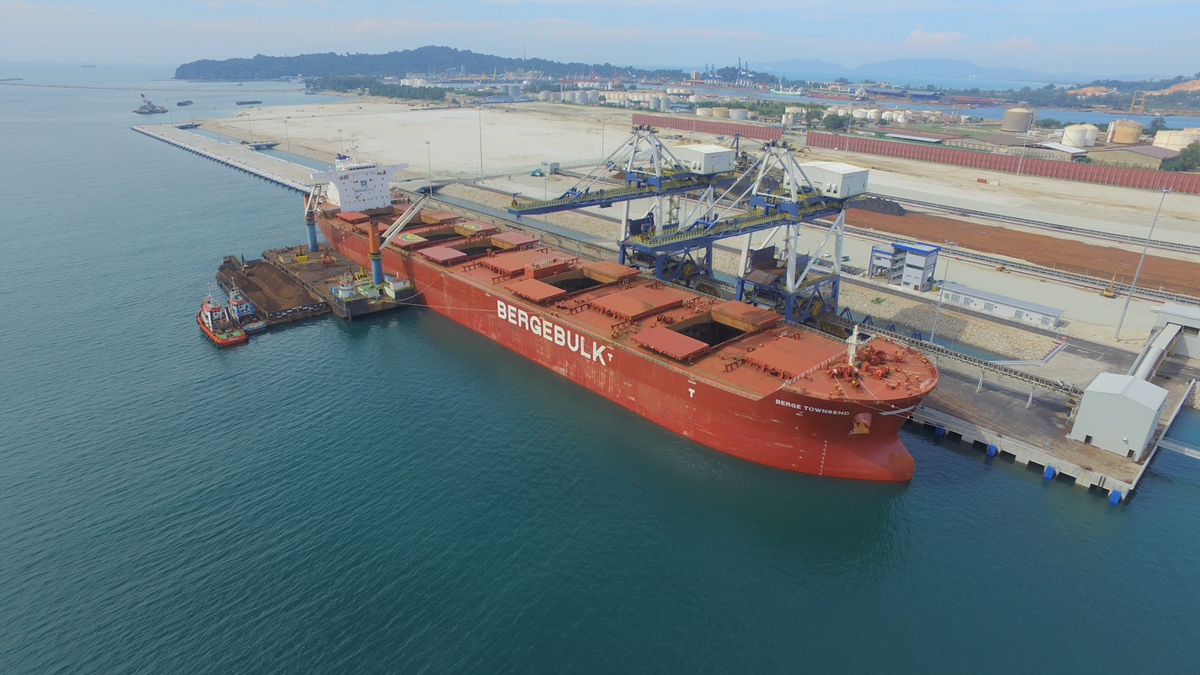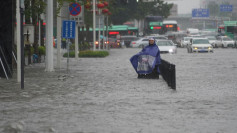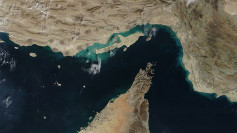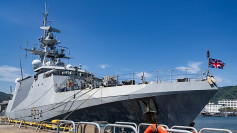As two close neighboring countries being separated only by South China Sea, China and Malaysia share a long history of friendship. As early as Ming Dynasty, admiral Zheng He already had a close contact with Malacca Sultanate mainly in present-day Peninsula Malaysia, helping it to fight against pirates and resolve conflicts with neighboring states, which consequently ensured stability and prosperity of the region at that time.
600 years after Zheng He's expeditionary voyages, not only do the two countries maintain the previously profound friendship, but also have opened a new chapter of strategic cooperation.

Kuantan Port
Due to its geographical location, similar culture and complementary industrial structure with China, Malaysia is one of the first countries for responding to China's "Belt and Road initiative" (BRI). Furthermore, the bilateral economic and trade relations have become increasingly close in recent years, and the two countries are important partners providing significant development opportunities to each other. According to official statistics, China has become Malaysia's largest trading partner for nine consecutive years.
To comprehensively promote the "Belt and Road Initiative", and further develop trade cooperation between China and Malaysia, it is necessary and essential to improve the cross-border transportation infrastructure, and construction of ports play a central role for the "marine economy".
Under this background, Guangxi Beibu Gulf International Port Group (hereinafter called Beibu Group) and Malaysia IJM Group (hereinafter called IJM Group) signed the "Malaysia Kuantan Port Share Transfer Agreement" in October, 2013. They began to participate in the construction and operation of the port.
Upgrade Kuantan Port to Help Local Economic Development
"There are many ports in Malaysia. Most of ports are located in the west coast of Malaysia because of the (unbalanced) growth before. As far as east coast's concern, we (Kuantan Port) are the only container port for the east coast of Malaysia, so it is quite important in that sense." Mazlim bin Husin, Chief Operating Officer of Kuantan Port Consortium, told Business Times. In addition, he explained that the Malaysian government began to build Kuantan Port in the late 1970s, mainly for the export of local timber and palm oil, that is why container cargo only accounts for roughly 10% of port throughput. Mazlim also added: "If you compare with other ports in Malaysia, we (Kuantan Port) are small in terms of container cargo (handling). (But) in terms of dry bulk cargo, maybe we are No.1 or No. 2 at the moment."

Kuantan Port
After decades of development, Kuantan Port has become the main distribution center for petrochemical, bulk and container cargo on the East Coast Malaysia. However, due to the infrastructure limitation, the port's potential has not yet fully realized. According to Ye Jingtao, project manager of Beibu Group being responsible for technical support at Kuantan Port, there are 11 multi-purpose berths, 8 liquid petrochemical berths and 3 container berths in the "old Kuantan Port". The maximum water depth of the berths is only 11.2 meters, and the maximum berthing capacity is no more than 40,000 tons, which is unable to meet the needs of local economic development.
Although the East Coast Malaysia is relatively lagging behind with regard of economy, its development potentials cannot be underestimated. The entire East Coast has a good natural environment with abundant natural resources such as minerals, oil and natural gas. Besides, the East Coast Economic Region (ECER) was established by the Malaysian government in 2007 aiming for more investment to fully tap the region's economic potential.
In addition, Kuantan Port has received approval with conditions from The Ministry of Finance to establish a Free Zone port in 2016. Mazlim expects that the official status will be gazetted by the government by the end of this year, and then more goods will be transferred through Kuantan. As a port with the shortest distance to China in Malaysia, Kuantan Port has already opened direct shipping routes to China, so the goods from the East Coast Malaysia no longer need to be transferred to mainland China via Singapore or Hong Kong, which greatly shortens the shipping time.

Kuantan Port
After Beibu Group became an important shareholder, they began to upgrade old port area, plan and construct New Deep Water Terminal (NDWT) with support of new port facilities and technical staff from China. Mazlim also told Business Times that the development of NDWT is divided into two phases. The phase 1A has been completed. The water depth of berth is 16 meters and the maximum berthing capacity is 150,000 tons. Currently, it mainly serves for Alliance Steel located in the Malaysia-China Kuantan Industrial Park (MCKIP), receiving imported iron sand and coal; Phase 1B is expected to be completed at beginning of next year, with specifications similar to phase 1A. The phase 2 berth will be 18 meters deep and its maximum berthing capacity will be as high as 200,000 tons. According to official information from Kuantan Port, the throughput capacity of the entire port will double to 52 million tons when the NDWT is entirely completed. By then, Kuantan Port is most likely to become an gateway port connecting China and ASEAN.
The Neutral Impact of East Coast Rail Link (ECRL) on Kuantan Port
"I don't think it (ECRL) is cancelled, it is postponed. When we designed the new port, ECRL is not even noted, so it doesn't really affect Kuantan Port that much. If it happens (completion of ECRL), it will be our bonus. From the perspective of logistics, it will be good for the port, and I love the idea of connecting Kuantan Port with Kuala Lumpur and Port Klang. " Mazlim told Business Times.
According to available information, the ECRL is an infrastructure project connecting the East Coast Economic Region (ECER) with West Coast and Central Region of Peninsular Malaysia. One of the main purposes is to link the Kuantan Port and the Port Klang next to Kuala Lumpur to shorten logistics time and reduce cost between the two ports. Mazlim believes that such transportation infrastructure is beneficial to the port's long-term development, but he said: "Even if it (ECRL) is cancelled, it will not harm us (Kuantan Port)."

Kuantan Port
During the visit to Kuantan, it is found that there are some other industrial parks around Kuantan Port besides MCKIP, such as Gebeng Industrial Park and Pekan Automotive Park, and in which many multinational companies are engaged in petrochemical production and spare parts manufacturing. Therefore, it is believed that the existing industry of Kuantan has a fair demand for the NDWT. The port and the industry shall be able to achieve a coordinated development. The port's upgrade is supported by the demand of the industrial park, which in turn the increased throughput capacity of the port can provide sufficient logistical support for the development of local industry.
In the mid of October, Malaysian Transport Minister, Anthony Loke Siew Fook officially visited the newly-completed NDWT at the Kuantan Port. At the subsequent press conference, he told the media that the government will continue the development of Kuantan Port with or without ECRL. He also stressed that there has not been any final decision on ECRL yet. In addition, he mentioned that there are many foreign investments around the port, so it is necessary to have NDWT.
The ECRL has a total planned length of 688 kilometers, which connects important towns on the East Coast with the economic centers of the West Coast to forming a east-west railway route across the Peninsular Malaysia. As according to the Malaysian Finance Minister, the total cost of the project is about 81 billion Malaysian Ringgit (about USD 19.5 billion), and the planned construction period is 7 years. The project is contracted to China Communications Construction Group, and which is by far the largest overseas railway project for Chinese companies. Last year, the project officially started in Kuantan, and then-Prime Minister of Malaysia Najib Razak attended the commencement ceremony. After the new Malaysian government came to power this year, the project was suspended on the ground of high government debt.




